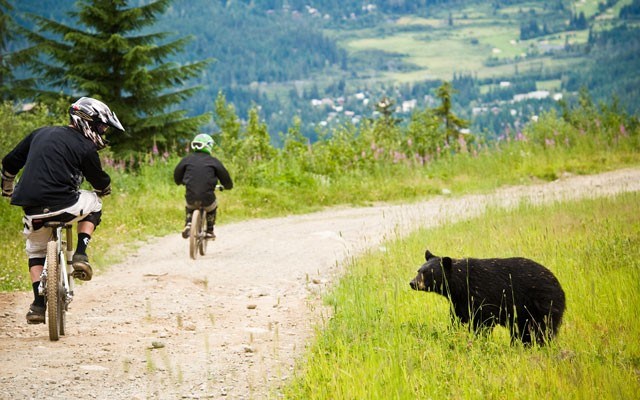Earth Day is always worth celebrating if for no other reason than it focuses people on the climate issues facing the world.
But it must also be a day we take stock of what real change is happening and what is window dressing.
This April 22 in New York, the historic Paris climate change agreement is set to be signed. You will recall that the agreement has been hailed as a watershed moment for the human race, which appears to be finally taking responsibility for its actions.
Said eminent environmentalist David Suzuki after the December conference's conclusion: "(It) may have been our last chance for a meaningful agreement to shift from fossil fuels to renewable energy before ongoing damage to the world's climate becomes irreversible and devastating."
It is, in essence, a blueprint for the next steps humans must take to try and slow the rate of climate change so that the world avoids its worst impacts, such as drought, crop failures and natural disasters.
The nations that met in Paris last December are responsible for over 95 per cent of global emissions — Canada and other industrialized nations are required to transition from fossil fuels to 100 per cent renewable energy by 2050 and developing nations by about 2080.
An ambitious goal — only achievable if everyone stays on course.
That's why it is disheartening to read this week that the federal Liberal government's new method of assessing the climate impact of Kinder Morgan's $6.8-billion Alberta-to-Burnaby pipeline expansion only looks at the upstream impacts, or those impacts commonly known as the exploration and production sector.
But surely what also needs to be considered are the "downstream" impacts, or the way the sector reaches consumers through products such as gasoline or petrol, kerosene, jet fuel, diesel oil, heating oil, fuel oils, lubricants, waxes, asphalt, natural gas, and liquefied petroleum gas (LPG) as well as hundreds of petrochemicals.
The National Energy Board has completed hearings and is scheduled to make its recommendation by May 20 to the federal cabinet, which in turn will have until December to make its final decision.
According to Simon Fraser University climate economist Mark Jaccard, referenced in the Vancouver Sun this week, the combined upstream and downstream emissions from the Kinder Morgan project would be 79 million tonnes a year — or almost 10 times higher than the emissions just from upstream use.
The Liberal government has a high pedestal to balance on thanks to the darlings they became before, during and after Paris.
Climate change is complicated. Everyone understands the broad strokes of what it is and the changes that must be introduced but every action also has a reaction.
Consider the growth in wind and solar farms. There is no doubt that alternative fuels are an essential part of the future but they also have a cost to the environment — one that we don't hear much about.
A solar array field from above can look like a lake which attracts birds — one such facility in the U.S. is suspected of being responsible for the deaths of up to 28,000 birds a year. Wind farms too are taking a toll on avian populations including golden eagles.
Obviously it is irrational to build new power sources that themselves cause devastation to the natural world around them when that is the very thing we are trying to avoid.
But consider for a moment the millions of birds and other creatures on land and in the sea destroyed by the oil industry.
No clean answer here — though it would be helpful if the purveyors of wind and solar power farms actually admitted the bird death was happening and addressed it with plans for mitigating the slaughter.
What about closer to home?
Whistler is all about nature and residents and stakeholders alike have been upfront about how climate change will affect us, indeed nearly all ski resorts.
Is Whistler Blackcomb's Renaissance Plan part of the answer? On the face of it the plan seems to be as far away from being green as you can imagine thanks to the construction of a huge waterpark, more trails, lifts and the hope of drawing hundreds of thousands more visitors.
But again, it's not black and white. This is a plan that could keep Whistler viable far into the future as climate change alters ski patterns.
But execution of it will be everything.
The waterpark must recapture condensate, use cutting edge backwash filters, do all it can to protect the 2.9 million litres of water it will be filled with.
When water restrictions come in the summer, as they always do, residents and visitors alike will have a hard time supporting a waterpark that is careless with such a precious resource.
And there is no escaping the rise in emissions Whistler will be responsible for as it attracts more and more visitors by car. Wouldn't it be great if visitors could purchase carbon offsets right in their hotels or online for the emissions produced getting here?
New mountain bike trails and new lifts mean more disruption on the mountains for our local bears. Their future and their survival must also be accounted for if Renaissance unfolds over the next several years.
There is no escaping the fact that each and every one of us has to help slow climate change in whatever way we can. This Earth Day, and every day, remember there is only one planet Earth.




